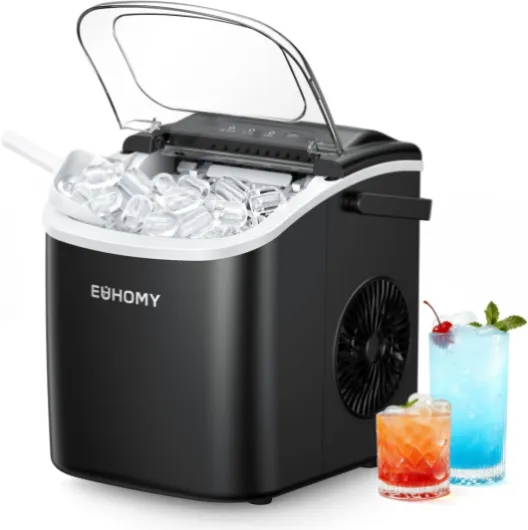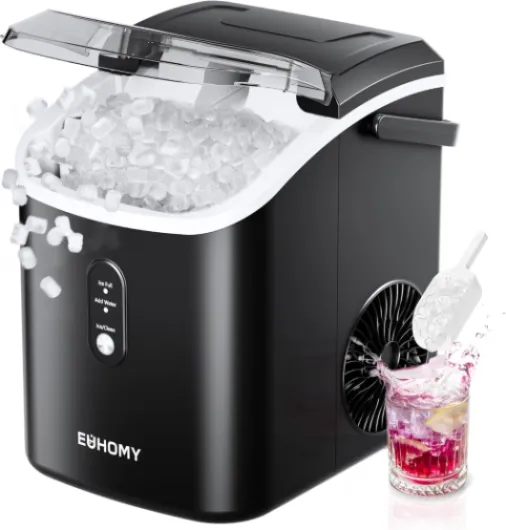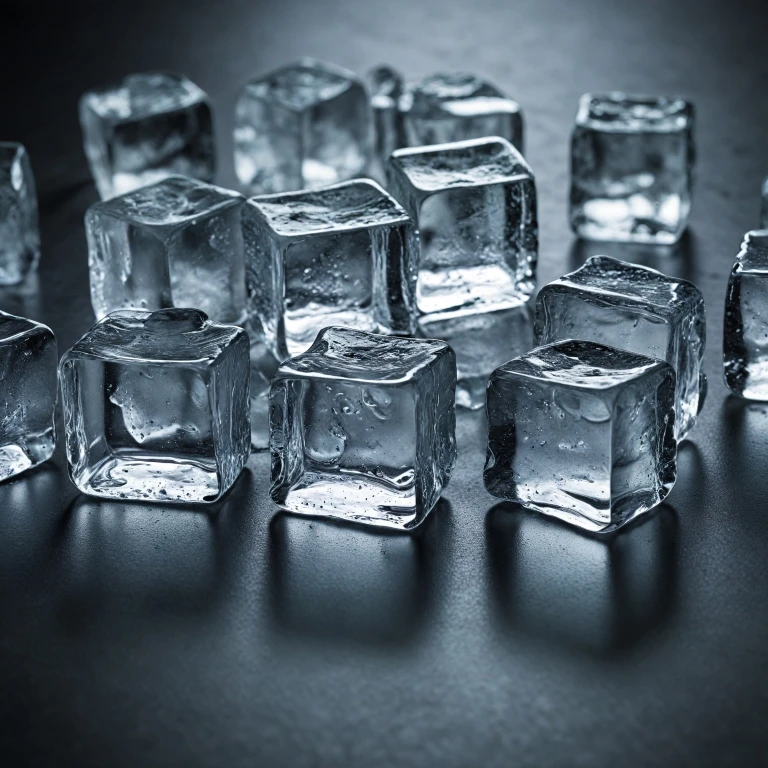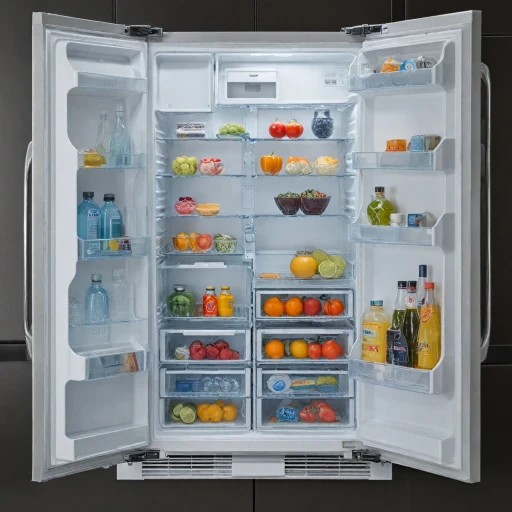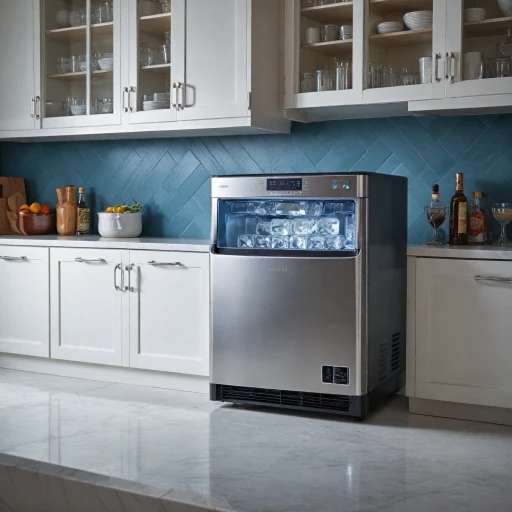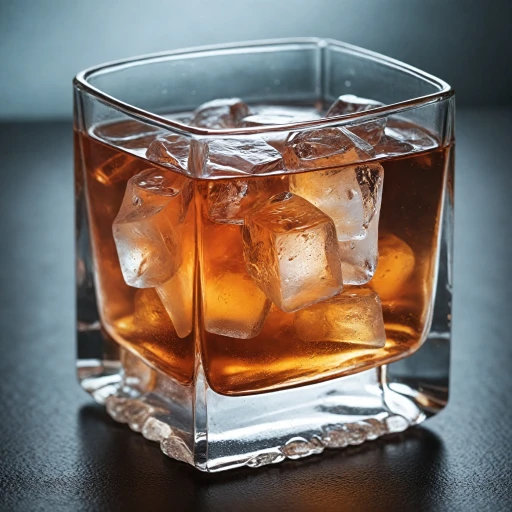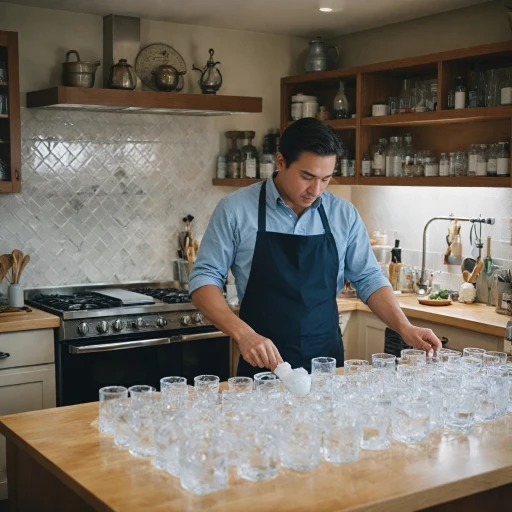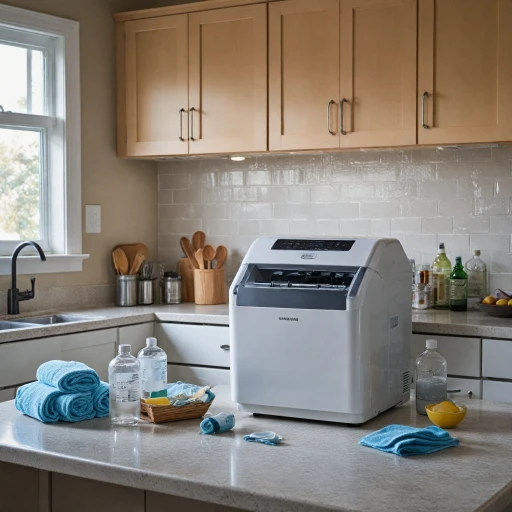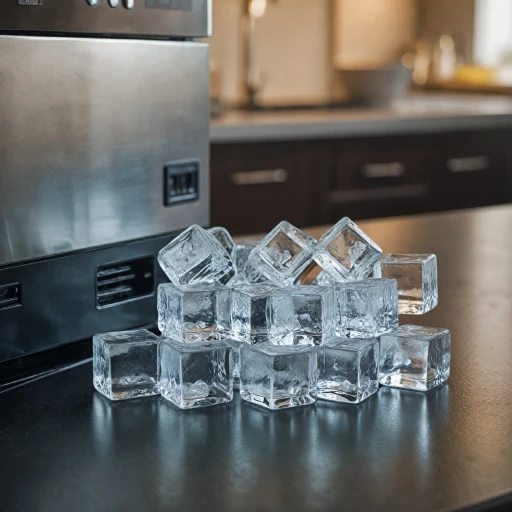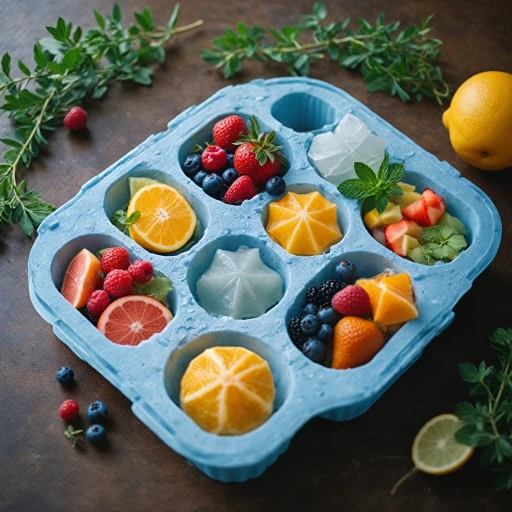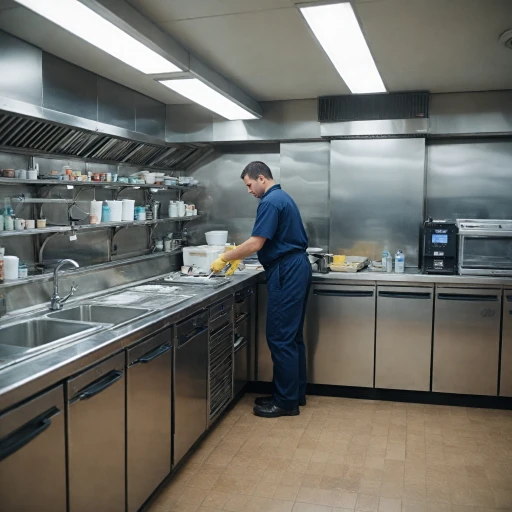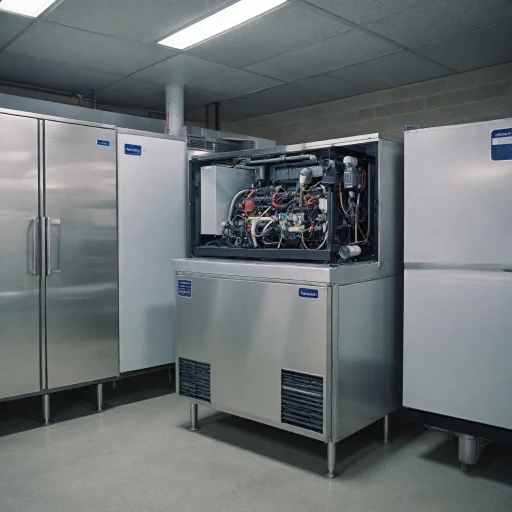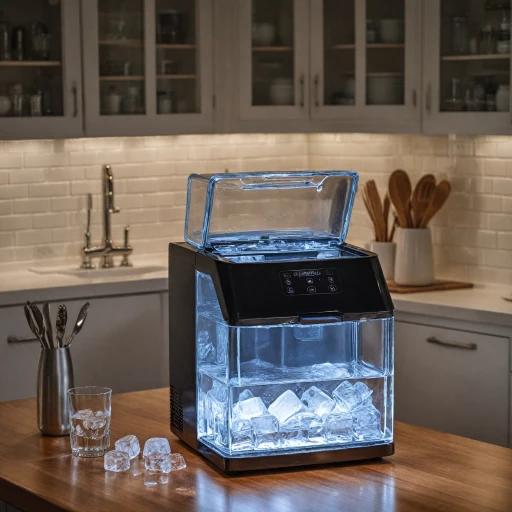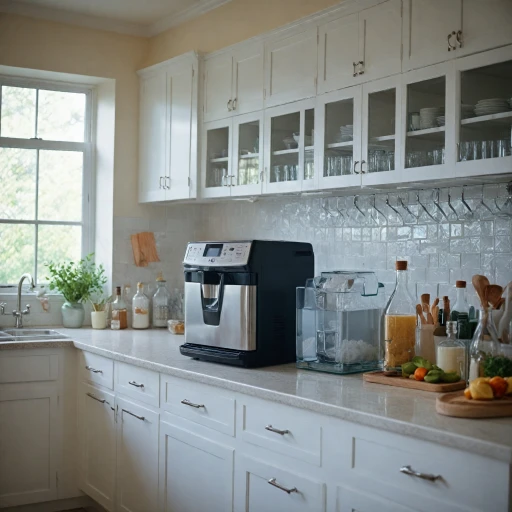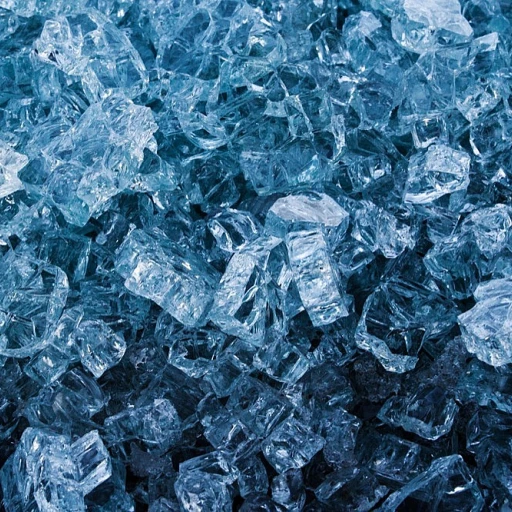
Understanding the Science Behind Clear Ice
The Science of Clear Ice
For any ice enthusiast, achieving crystal clear ice cubes is not just about visual appeal; it also enhances the overall aesthetic of cocktails and drinks. But what exactly makes ice clear or cloudy? The transparency of ice cubes is largely determined by the purity of the water used and the freezing process. When water freezes, air bubbles and impurities can become trapped inside, leading to a cloudy appearance.
The key to achieving clear ice lies in minimizing these air bubbles and impurities. This often involves understanding how water behaves when freezing. Tap water, for instance, usually contains minerals and impurities that can mar the clarity of your cubes. By contrast, distilled water or water that has been boiled and then cooled typically offers clearer results.
Understanding Air and Impurities
As water freezes, it tends to freeze from the outside inwards. Air and impurities are pushed towards the center of the ice cube, resulting in those undesired cloudy spots. Techniques such as directional freezing can help in controlling the freeze direction, thereby forcing air and impurities outwards, away from the core of the ice block.
Optimization of freezer conditions is also crucial. A slower freezing process typically yields clearer ice, as it allows more time for air bubbles to escape before the water solidifies completely. Moreover, consider the ice cube tray and its environment—ensure that the tray is clean and use a dedicated cooler to slow down the freezing.
Even with the best practices, some ice makers may present challenges due to their default settings, but adjustments can often be made to enhance clarity. This involves choosing the right water, maintaining the ice maker, and sometimes, making alternative ice blocks for special occasions or cocktails involving an ice pick and cube trays.
Choosing the Right Water for Clear Ice
Selecting the Best Source for Pristine Ice
When it comes to achieving crystal clear ice cubes, the quality of the water you use plays a crucial role. Given that water constitutes the primary ingredient in ice formation, impurities can significantly alter the clarity of your ice cubes. Addressing this is key to elevating your ice-making skills.
Using the Purest Water Possible
To enhance the transparency of your ice, start by using distilled water. Unlike regular tap water, distilled water lacks the minerals and particles that lead to cloudy ice. For those keen on achieving crystal clear perfection, this might be the best option. However, if distilled water isn't readily accessible, you might also consider boiling water before using it in your ice maker. The process of boiling water helps eliminate trapped air bubbles and minimize impurities.
Exploring Additional Water Techniques
- Directional Freezing: This technique involves freezing the water in a way that forces air and impurities to be pushed to one end of the ice block, often mimicked using a cooler or insulated tray.
- Filtered Water: Utilizing a high-quality water filter can also help remove impurities from tap water, improving clarity.
Practical Tips for the Culinary Artist
The quest for water clear ice cubes complements the artistry of crafting exquisite cocktails. Consider utilizing an ice pick to chisel your creations from a large block or using a specialized ice tray that allows for separate freezing chambers, thus enhancing your ice presentation.
Moreover, for those eager to explore further, you might find interest in understanding the benefits of using bullet ice cubes and how they fit into your overall ice-making strategy. These considerations will significantly improve both the visual and practical aspects of your cocktails or other beverages.
Optimizing Your Ice Maker Settings
Age-Old Rituals for Perfect Ice Cubes
Achieving crystal clear ice cubes from your ice maker is not just about the water you use; it's also crucial to optimize your ice maker settings. Here are some tips to guide you:- Water Temperature: Generally, the water in an ice maker's reservoir should be at room temperature. Freezing warm or boiled water can effectively help remove any existing air bubbles.
- Freezer Temperature: Ensure your freezer is set to an optimal temperature. The slower the freezing process, the clearer the ice will be. Adopting a directional freezing method can significantly enhance clarity, as it pushes impurities to one side.
- Ice Tray Selection: Using a high-quality ice tray can make a difference. Silicone ice trays, for example, are more flexible and allow for a smoother release of the cubes, reducing the formation of cracks or cloudy spots.
- Avoid Bubbles: When pouring water into the ice cube tray, do it gently to reduce the occurrence of air bubbles. Air bubbles and impurities often cause cloudy ice cubes.
- Timing and Monitoring: Check on your ice cubes regularly. Removing them promptly once they are frozen can help avoid cloudy layers that might develop due to prolonged exposure to freezer air.
Techniques for Making Clear Ice at Home
Practical Steps to Achieve Crystal Clear Ice at Home
Creating clear ice cubes at home can feel like a journey, but with a bit of precision and the right techniques, your cocktails will never look cloudy again. Let's dive into some tried-and-true methods you can use to accomplish this ice-making feat.- Directional Freezing: This technique is a game-changer when it comes to reducing the air bubbles in ice. By freezing water in one direction, it pushes air and impurities down, resulting in crystal clear cubes. To try this, use a cooler inside your freezer, allowing the water to freeze from the top down. This process mimics how ice is formed in nature, producing clearer results.
- Use of an Ice Tray with Insulation: An ice cube tray equipped with an insulating layer keeps the sides warmer than the top, mimicking directional freezing. This method reduces the chances of air getting trapped, making the ice clearer.
- Boiling Water Technique: Boiling water (and allowing it to cool) before freezing can reduce cloudiness. While it doesn't remove every impurity, boiling helps eliminate some dissolved air. For best results, boil the water twice and use distilled water to start.
- Impurity Management: Filtering your tap water can significantly enhance clarity. Although some prefer distilled water for its purity, using a charcoal filter can remove many impurities that cause cloudiness and air bubbles.
- Slow Freezing: Allowing the water to freeze slowly is key to reducing imperfections. Adjust your freezer settings to a warmer setting or place your cooler in the fridge's freezer compartment for a slower process.
Troubleshooting Common Ice Clarity Issues
Troubleshooting Cloudy Ice Issues
If you're finding that your ice cubes aren't as clear as you'd like, there are a few common issues you might encounter and potential solutions to consider. Let's explore these solutions to help you achieve crystal clear ice and elevate your cocktail experience.
- Check the Water Quality: Using distilled water can clear up many ice-related issues by removing impurities found in tap water. Additionally, boiling water before freezing can help eliminate dissolved gases that lead to cloudy ice.
- Adjust Freezer and Ice Maker Settings: Temperature settings can greatly affect ice clarity. Ensure that your freezer is set at the optimal temperature. If your ice maker allows, experiment with different freezing speeds as slower freezing times can help remove air bubbles from the cubes.
- Inspection of Ice Trays: Getting a well-designed cube tray can facilitate the better formation of ice cubes. Consider utilizing a directional freezing technique by insulating the sides of your ice tray—this encourages crystal clear ice formation by forcing impurities toward one end of the ice block.
- Assess the Freezing Environment: If there is a lot of open space in your freezer, warm air will circulate more freely, disrupting the freezing procedure. A cooler can be used to control the environment and help maintain an optimal environment for the ice-making process.
- Preventing Air Bubbles: The presence of air in your ice can cause cloudy appearances. You might try using an ice pick to crack the ice slowly, allowing trapped air bubbles to escape.
These troubleshooting tips can help transform your ice cubes from cloudy to clear, ensuring each cocktail you serve with perfectly presented ice adds to the overall aesthetic and taste experience.
Enhancing Your Ice Presentation
Maximizing Aesthetic Appeal with Clear Ice
When it comes to showcasing crystal clear ice cubes, presentation matters just as much as clarity. Whether you're serving up a sophisticated cocktail or simply want to elevate your beverage experience, there are several ways to enhance the visual appeal of your clear ice.
First, focus on the shape and size of the cubes. Using a specialized ice mold or cube tray can help you achieve uniformity, ensuring that your ice cubes look pristine and professional. Shapes like spheres or large cubes are not only visually appealing but also practical, as they melt slower, keeping drinks cooler for longer without diluting them.
Additionally, consider experimenting with directional freezing. This technique involves freezing your water in layers from one direction, driving air and impurities to the bottom, which you can then remove. This will not only improve the clarity but also the structural integrity of your ice.
Utilizing boiled water or distilled water in your ice maker can also make a significant difference. Boiling water helps in eliminating air bubbles and impurities, resulting in a denser, clearer ice. On the other hand, distilled water, being free of minerals and impurities, creates ice that is both aesthetically pleasing and pure.
Finally, if you're using an ice tray or ice block to create your cubes, ensure it's clean and free from any residual flavors that could transfer to the ice. You might also consider using an ice pick to carve the ice for a more refined appearance, which can be particularly impactful for high-end cocktails.
- Use uniform ice molds or trays.
- Experiment with directional freezing.
- Choose either boiled or distilled water.
- Keep trays and tools clean.
- Optionally carve ice with an ice pick.
By implementing these practices, you will achieve not only clear ice cubes but also an impressive presentation, sure to enhance any cocktail or refreshment.
-logo-retina.jpg)
